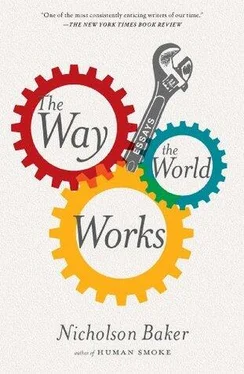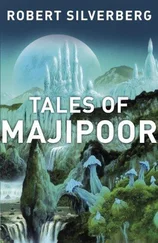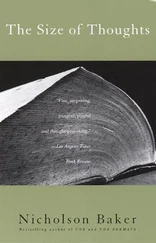Revolutionary change was possible, Endicott believed: Harvey Milk, Martin Luther King, the people of Tunisia, the people of Egypt, had all made revolutionary change. “We’re going to shut down our workplaces. We’re going to shut down our factories and our schools. And we’re going to tell this government not one more dollar! Not one more bullet! Not one more bomb! Not one more day of U.S. imperialism!” (Cacophony of applause.)
People began arranging their banners and signs and assembling to march. “While everybody is waiting, will you please remove your hats?” said Watermelon Slim. “Except those of us who have chemical gear on.” Then he came to attention. “Present — arms!” He played taps on his harmonica, with a slow mournful vibrato. “We must mourn, we must also show our anger,” he said. “We must also bear this war evenly. Let’s go let them bear some of it, too. Come on.”
Then we marchers set out, led by a World War II vet from the 90th Infantry Division, Third Army. We walked silently around several blocks to the west of the White House (evidently the police didn’t want us to actually circle the White House), and then half an hour later, we massed where we’d begun, in front of the black, sharp-tipped White House fence.
There were many policemen now: motorcycle cops, park police, horseback police, K-9 police, and sinister-looking SWAT teams in black hats and black uniforms tucked into high black boots. It was a strangely varied festival of police “protection.” They were hauling out segments of a metal crowd-control fence. They locked together the segments, fencing off a large area of public sidewalk and street. (The street, Pennsylvania Avenue, is normally open to public foot traffic and closed to cars.) And then they announced that if you stood on the wrong side of the temporary fence you were going to get arrested. The police created, in other words, a potential criminal infraction where there should have been no infraction. For standing on a public sidewalk, in a place where people had strolled undisturbed moments before, you could now be arrested for “disobeying an official order.” I decided that this was ridiculous and that I wanted to be arrested. But after consulting my wallet, I realized that because I’d given forty dollars to Veterans for Peace, I didn’t have enough cash to bail myself out. Next time, I thought.
More than a thousand of us stood against the new barricade, shouting, along with the hoarse-voiced bullhornist, “This is what democracy looks like!” And “Money for jobs and education, not for wars and occupation!” And “Stop these wars! Free Bradley Manning!” And “From Wisconsin to Iraq, stand up, fight back!” And “They say more war, we say no more!” I suddenly felt the rising power of an outraged crowd. It has a different kind of persuasiveness than any verbal argument does. I watched a blind man in a wheelchair, missing several fingers, chanting “U.S. out of the Middle East, no justice no peace.”
A hundred and thirteen protesters were eventually arrested in front of President Obama’s White House that afternoon. (Obama, meanwhile, was down in South America trying to sell F-18 warplanes to Brazil.) The arrests took hours. Someone called out, “You’re arresting the wrong people! Arrest Bush I, arrest Bush II, arrest Obama!” One of the women, when she was out of sight in the arrest tent, began a series of blood-curdling screams of protest. “Let us see what’s happening,” someone called. As a paddy wagon drove off, someone called out, “The Jell-O’s no good in the slammer, don’t eat it.”
In the end the SWAT team had to summon two city Metro buses, in addition to the wagons, to carry off the detainees. Both buses carried ads for breakfast at McDonald’s: PUTS THE A.M. BACK IN AMAZING. The police so parked the paddy wagons and the buses that the crowd couldn’t witness the arrests. As a man with a ponytail was pushed into the back of a paddy wagon, a woman in our crowd read from the Constitution, the part about how Congress cannot abridge the right of the people “peaceably to assemble and to petition the government for a redress of grievances.” I applauded her. There was no question that the police were denying the public the right of peaceable assembly.
There were cheers when Daniel Ellsberg, forty years after his arraignment for leaking the Pentagon Papers, was led toward the arrest tent. He turned toward the White House, obliging a policeman who wanted to take his picture. His wrists were zip-corded behind his back. He flashed us a double peace sign from his cuffed hands.
When the arrests were all done, one of the cops collected some FREE BRADLEY MANNING signs and put them in a garbage bag in the trunk of his cruiser.
(2011)
I’d never held a video-game controller until last fall. Which is a pretty sad admission, as if I’d said in 1966 that I’d never watched Bonanza or heard a song by the Rolling Stones. My sixteen-year-old son and his friends — his male friends, that is, all of them polite, funny, good-hearted kids — play video games just about every day. They don’t watch much TV; they don’t have time. Most of the games they play are on the Xbox 360 console — not the Wii or the PlayStation 3—and most involve killing and dying. The big one for the first half of last year was Nazi Zombies, a mini-game included with the best-selling Call of Duty: World at War . In it, you and your friends, linked by audio headsets, hide out in a ruined building, and yellow-eyeballed zombies in Nazi uniforms lurch toward you, mumbling and waving their arms and trying to eat your head. You have to shoot them or stab them or set them on fire, and they never stop coming. If they swarm you, you call out, “Dude, they’re on me!” and a friend struggles over to save you. If you’re near death, you call out, “Dude, revive me!” and a friend jabs you with a revivifying hypodermic. There’s a lot of wild laughing.
I still haven’t played Nazi Zombies. But since last fall I’ve been buying some of the biggest new game releases and trying them out. I say “trying” because the first thing I learned is that video games — especially the vivid, violent ones — are ridiculously hard to play. They’re humbling. They break you down. They kill you over and over. Eventually, you learn how to crouch and crawl through grass and hide behind boxes. You fight your way to a special doorway and you move up to the next level. Suddenly, you feel smart and euphoric. You reload, with a reassuring metallic click, and keep on going.
To begin, you must master the controller. On the Xbox 360 controller, which looks like a catamaran, there are seventeen possible points of contact. There’s the left trigger and the right trigger, the left bumper and the right bumper, two mushroom-shaped joysticks, a circular four-way pad, two small white buttons, each with triangles molded into them, and a silver dome in the middle that glows green when you press it. Then, there are the very important colored buttons: the blue X, the green A, the red B, and the yellow Y. On the slightly smaller Sony PlayStation 3’s controller, the buttons are similar, except that in place of the colored letters you’ve got the green triangle, the pink square, the red O, and the blue X. (The PlayStation 3’s blue X button is in a different place than the Xbox 360’s blue X button — madness.) In order to run, crouch, aim, fire, pause, leap, speak, stab, grab, kick, dismember, unlock, crawl, climb, parry, roll, or resuscitate a fallen comrade, you must press or nudge or woggle these various buttons, singly or in combination, performing tiny feats of exactitude that are different for each game. It’s a little like playing “Blue Rondo à la Turk” on the clarinet, then switching to the tenor sax, then the oboe, then back to the clarinet.
Читать дальше












